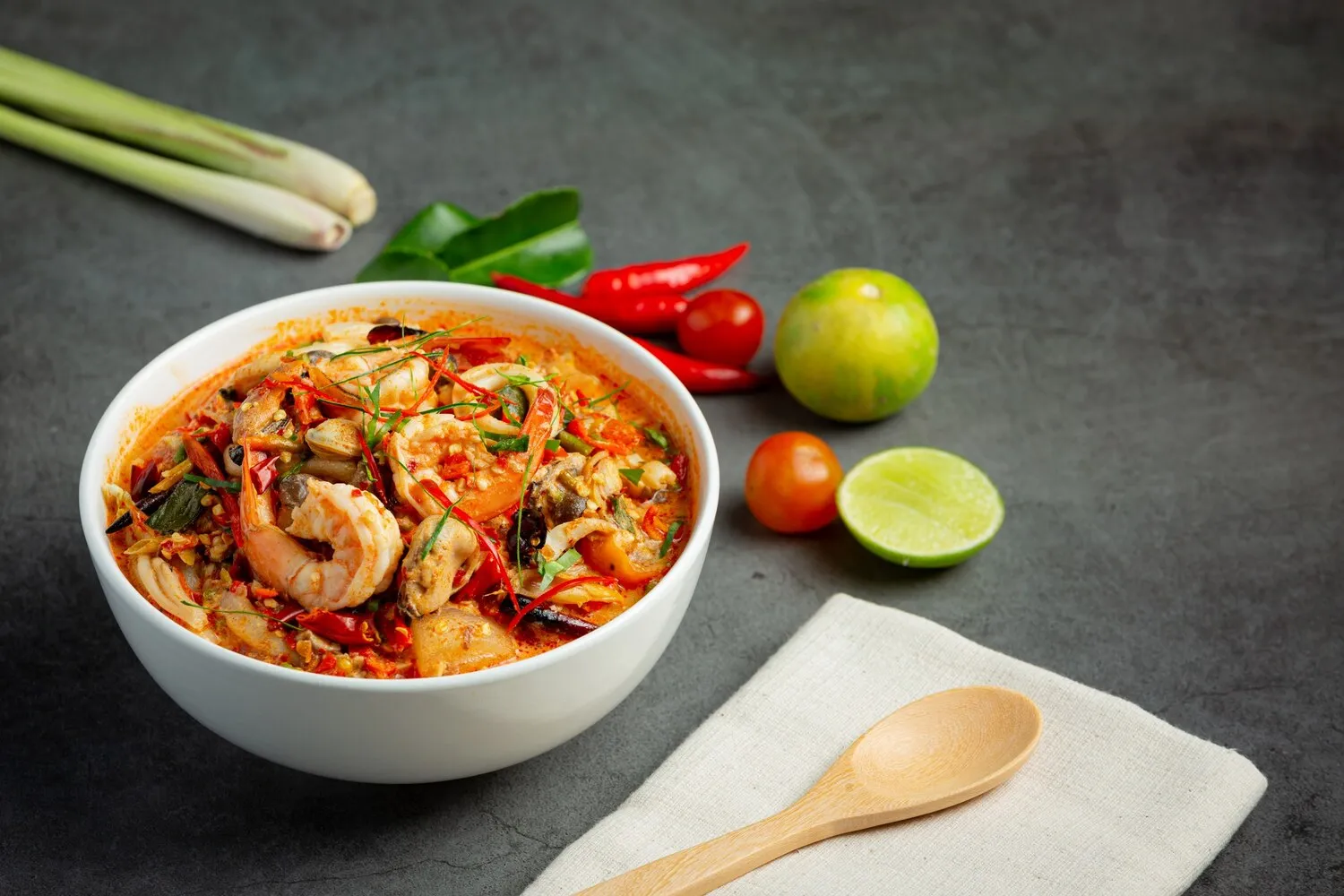
Fish Soup
Many reviews suggest that the Fish Soup is a great option at Bjerck Restaurant & Bar. Preparation includes use of local ingredients.
Nutrition Facts
* The % Daily Value (DV) tells you how much a nutrient in a serving of food contributes to a daily diet. 2,000 calories a day is used for general nutrition advice.
Fish soup has been a staple in coastal communities worldwide for centuries. In France, particularly in the Mediterranean region, it evolved from a simple fisherman's stew using unsold catch to a more refined dish, influenced by regional ingredients and culinary techniques. Bouillabaisse, a famous fish soup from Marseille, represents a pinnacle of this evolution.
Fish soup, particularly in coastal regions, holds a significant place in the local culture. It represents resourcefulness, community, and a connection to the sea. It's often a dish served at family gatherings, celebrations, and local festivals.
Regional Variations
Fish soup varies greatly from region to region, reflecting local seafood and culinary traditions. Bouillabaisse in France, cioppino in San Francisco, and caldeirada in Portugal are all examples of regional variations of fish soup, each with its unique character and ingredients.
Symbol of Resourcefulness
Historically, fish soup was a way for fishermen to utilize the parts of the catch that were not sold at market. This resourcefulness is still reflected in the use of fish bones and trimmings to create a flavorful and nourishing broth.
Communal Meal
Fish soup is often a communal meal, shared among family and friends. The act of preparing and eating the soup together fosters a sense of community and connection.
The flavor profile of traditional fish soup is intensely savory, briny, and aromatic. It's a celebration of the sea, with a depth of flavor derived from various types of fish, shellfish, and aromatic herbs and spices.
The primary flavor comes from the fish stock, which is made by simmering fish bones, heads, and trimmings. The specific fish used varies based on availability and tradition, but often includes white fish like cod, haddock, or sea bass, as well as shellfish like mussels, clams, or shrimp. Aromatic vegetables like onions, leeks, celery, and tomatoes add sweetness and depth. Herbs like thyme, bay leaf, fennel, and parsley contribute herbaceous notes. Spices like saffron, paprika, and cayenne pepper provide warmth and complexity. Some variations include wine or Pernod for added richness and anise flavor.
Freshness is Key
Use the freshest possible fish and shellfish. Avoid anything that smells overly fishy or has a slimy texture. If using frozen seafood, thaw it completely before adding it to the soup.
Building the Broth
Take the time to create a flavorful fish stock. Simmer fish bones, heads, and trimmings with aromatic vegetables for at least an hour. Skim off any impurities that rise to the surface.
Cooking the Fish
Add the most delicate fish towards the end of the cooking process to prevent them from overcooking and falling apart. Simmer gently until the fish is just cooked through.
Don't Overcrowd the Pot
Overcrowding the pot will lower the temperature of the broth and can result in uneven cooking. Cook the fish in batches if necessary.
Explore additional Soup dishes and restaurants
Explore SoupDiscover top dining spots and culinary experiences in Bergen.
Explore BergenLearn more about the food culture, restaurant scene, and culinary heritage of Norway.
Explore Norway